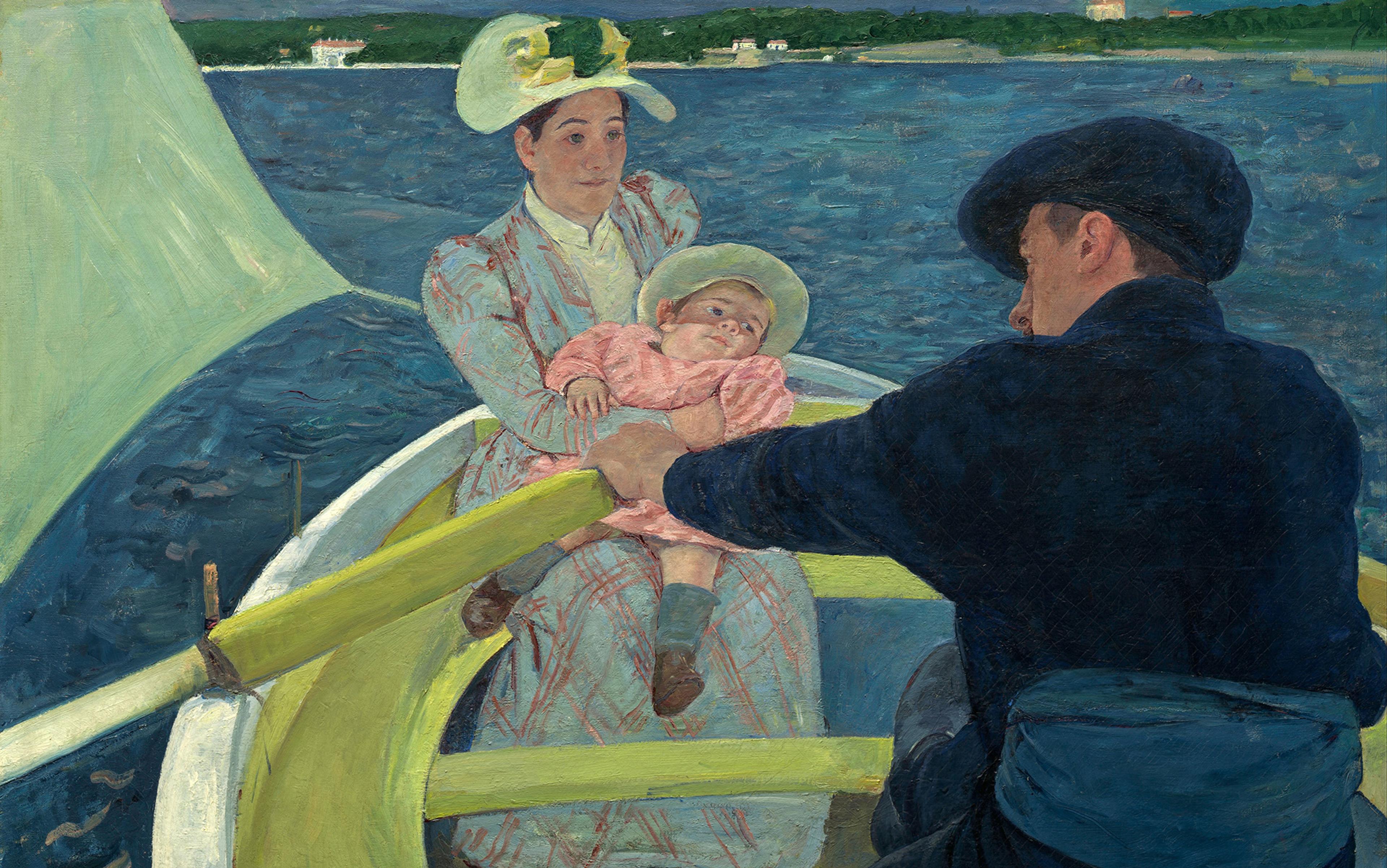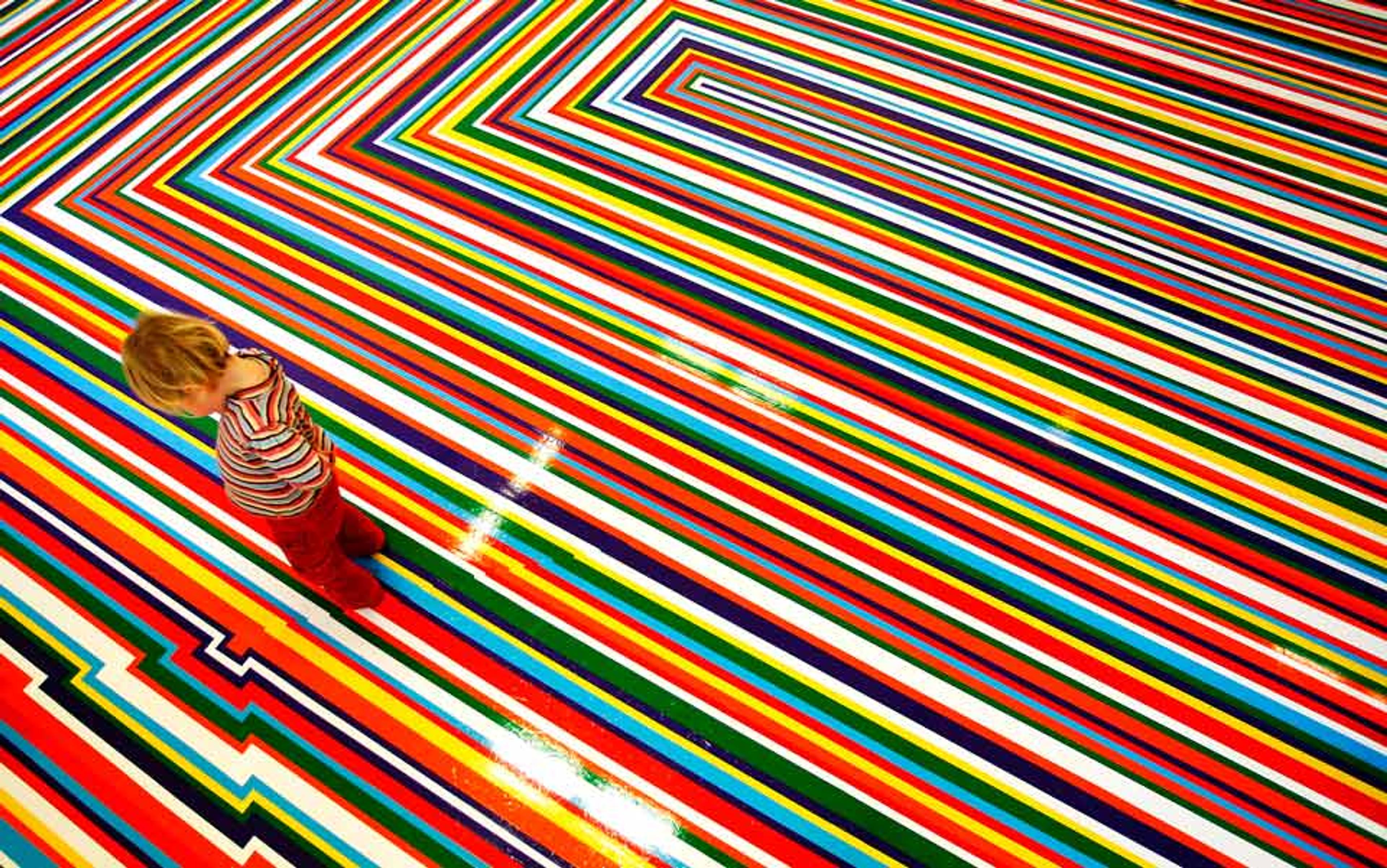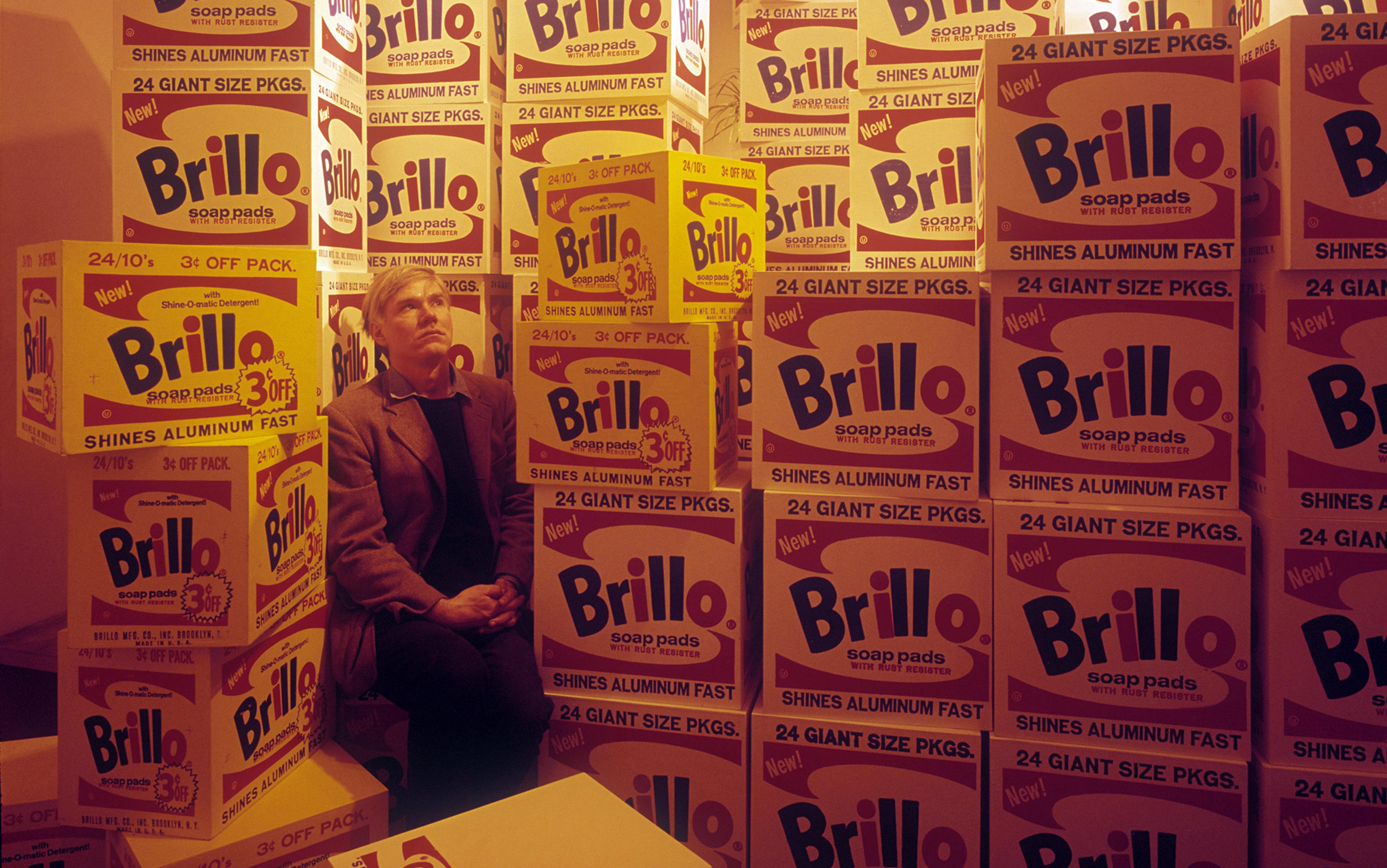Many philosophical questions about the arts would benefit from some serious empirical research. One thinker who welcomed empirical findings was the art historian E H Gombrich (1909-2001), who was influenced by findings in experimental psychology showing that perception is a matter of inference rather than direct seeing. But all too often philosophers have relied on intuitions and hunches without seeking information about how people actually interact with works of art. If we want to understand the arts, it’s time to take experimental psychology seriously.
Today, experimental philosophers and philosophically inclined psychologists are designing experiments that can help to answer some of the big philosophical questions about the nature of art and how we experience it – questions that have puzzled people for centuries, such as: why do we prefer original works of art to forgeries? How do we decide what is good art? And does engaging with the arts make us better human beings?
Christ and the Disciples at Emmaus, believed to have been painted by Johannes Vermeer in the 17th century, hung in the Museum Boijmans Van Beuningen in Rotterdam for seven years; in 1937, it was admired by the Vermeer expert Abraham Bredius as ‘the masterpiece of Johannes Vermeer of Delft’. But in 1945, Han van Meegeren confessed that he had forged this painting (and many others), and should thus be deemed as great an artist as Vermeer. But this did not happen. The same work formerly revered was now derided.
There are two kinds of art forgeries: invented forgeries in the style of an established artist, and copy forgeries, which are reproductions of existing works. Most commonly, forgers such as van Meegeren produce invented forgeries. Copy forgeries are less common; these are more difficult to get away with since it is often known where the original resides. Moreover, because it is impossible to make a perfect copy by hand, one can always see (or hope to see) differences between the original and the copy, and use these differences to disparage the copy. The art critic Clive Bell in 1914 suggested that exact copies always lack life: the lines and forms in the original are caused by emotions in the artist’s mind that are not present in the copier’s mind. The philosopher Nelson Goodman in 1976 argued that, even if we can detect no physical difference between the original and the copy, just knowing that one painting is the original and the other is the copy tells us that there could be subtle differences that we cannot see now but that we might learn to see later. This knowledge shapes our aesthetic experience of what we believe to be a direct copy.
The puzzle posed by forgery is this: why does our perception and evaluation of an artwork change simply by learning it is a forgery? After all, the work itself has not changed. Philosophers have taken two broad positions on this question.
According to the formalist position, when the original and the forgery are visually indistinguishable, they are not aesthetically different. For example, Monroe Beardsley in 1959 argued that we should form our aesthetic judgments only by attending to the perceptual properties of the picture before us, and not by considering when or how the work was made or who it was made by. So why did people change their evaluation of the Vermeer painting once van Meegeren confessed to being the artist? According to Alfred Lessing, writing in 1965, this response can be chalked up to social pressures: ‘Considering a work of art aesthetically superior because it is genuine, or inferior because it is forged, has little or nothing to do with aesthetic judgment or criticism. It is rather a piece of snobbery.’ This view assumes that artworks have perceptual properties that are unaffected by our knowledge about the background of the work.
According to the historicist position, what we perceive in a work is influenced by what we know about it. Despite the original and the forgery being visually indistinguishable, they are aesthetically different precisely because of what the formalists deny is relevant – our beliefs about who made the work, when, and how. The German critic Walter Benjamin in the 1930s argued that our aesthetic response takes into account the object’s history, ‘its unique existence in a particular place’. He believed that a forgery has a different history and thus lacks the ‘aura’ of the original. The philosopher and critic Arthur Danto took a similar historicist position in 1964 when he asked us to consider why a Brillo box by Andy Warhol that is visually identical to a Brillo box in a supermarket is a work of art. To determine that the box in the museum is a work of art ‘requires something the eye cannot descry – an atmosphere of artistic theory, a knowledge of the history of art: an artworld’. Denis Dutton claimed in 2009 that we perceive a forgery to be aesthetically inferior to an original because we take into account the kind of achievement the work represents – the artist’s process – and a forgery represents a lesser kind of achievement than an original.
Psychologists have stepped into the fray to determine how much the label ‘forgery’ affects our response to a work of art – and, if so, why. The first question is easier to answer than the second. Studies show that just telling people that a work is a forgery (or even the less-charged term ‘copy’) causes them to rate that work lower on a host of aesthetic dimensions. Artworks labelled forgeries or copies are rated as less good, less beautiful, less awe-inspiring, less interesting, lower in monetary value, and even physically smaller than the same image shown to other respondents as an ‘original’. In addition, brain activation changes: while the visual areas of the brain didn’t change in response to whether Rembrandt paintings were labelled ‘authentic’ or ‘copy’, the label ‘authentic’ resulted in greater activation of the orbitofrontal cortex – an area associated with reward and monetary gain.
Clearly, people don’t behave how the formalists thought that they should. What is causing their appreciation to be diminished? One possibility is that our sense of forgery’s moral evil unconsciously influences our aesthetic response. Another is that our knowledge of forgery’s worthlessness on the art market has the same kind of unconscious effect. But if we could strip forgery of its connection with deception and lack of monetary value, would it still be devalued? And, if so, can we demonstrate that the historicist position is correct?
With my research team, I put this to the test by showing people two duplicate images of an unfamiliar art work side by side, telling them that the painting on the left was the first in a planned series of 10 identical works by a painter. Participants were then told one of three different stories about who made the work on the right: that it was by the artist, by the artist’s assistant, or by a forger. For those told it was the artist’s assistant, we specified that the assistant’s copy had the artist’s stamp on it, and that having a team of assistants was typical artistic practice (hence not fraudulent). The auction price of $53,000 was listed below all images (right and left) except for the forgery, which was listed at only $200.
We asked people to rate the copy relative to the original on six dimensions:
Which one is more creative?
Which one do you like more?
Which one is more original?
Which one is more beautiful?
Which one is the better work of art?
Which one is more likely to be influential?
Responses fell into two categories: broadly evaluative (what formalists called aesthetic) – with reference to beauty, goodness and liking; and historical-evaluative (what historicists called historical) – with reference to creativity, originality and influence. We reasoned that forgeries would always be the most devalued of the three kinds of copies because of their immorality and their lack of monetary worth. The artist’s copy, however, is like a forgery without these two marks against it. Thus, our key comparison was between responses to the artist’s versus the assistant’s copy, relative to the original.
We found that, on broadly evaluative dimensions, the artist’s and the assistant’s copies were rated identically – with no distinctions in beauty, liking or goodness. Thus, our participants behaved like formalists. Previous studies reporting lower beauty ratings for images labelled forgeries had presented works one at a time. But here, when the original and the forgery were presented simultaneously, people were forced to concede that there was no beauty difference.
Even a copy of a Vermeer by Vermeer makes us feel like we are communing with Vermeer
On historical-evaluative ratings, however, the story was different. People rated the assistant’s copy as less creative, original and influential than the artist’s copy – even though both works were copies, both signed by the artist, and both worth the same monetarily. People now behaved as historicists, consistent with Danto’s position that visually identical Brillo boxes are not artistically identical.
These findings tell us that, when moral and monetary considerations are ruled out, there is still something wrong with a forgery. It’s not quite what Dutton thought, because while an original certainly represents a different kind of achievement from a forgery, there is really no difference in achievement between an artist’s copy and an assistant’s copy. Both are copies, after all. So what is it that’s wrong then?
I submit that it’s the aura that Benjamin talked about, which is dependent most critically on who made the work. Benjamin’s idea of ‘aura’ is consistent with what psychologists call essentialism – the view that certain special objects (eg, my wedding ring, or my childhood teddy bear) gain their identity from their history, and have an underlying nature that cannot be directly observed, a view developed extensively by the psychologist Susan Gelman. This is why we reject perfect replicas of such objects: we want the original. We appear to treat works of art this way too – as if they contain the essence of the artist, or the artist’s mind. We prefer the copy by the artist to the copy by the assistant because only the former contains that essence. This leads to the conclusion that just knowing that we are looking at a painting by Vermeer (even if it is a copy of a Vermeer by Vermeer) makes us feel like we are communing with Vermeer. Do we really want to find out that we were actually communing with van Meegeren?
These findings predict that we will not respond well to what the future is bringing us: three-dimensional prints of paintings virtually indistinguishable from the originals, and works of art generated by computers. These works will not allow us to infer the mind of the human artist.
The American art critic Peter Schjeldahl put this well when he wrote in 2008:
The spectre of forgery chills the receptiveness – the will to believe – without which the experience of art cannot occur. Faith in authorship matters. We read the qualities of a work as the forthright decisions of a particular mind, wanting to let it commandeer our own minds, and we are disappointed when it doesn’t.
If we read into a work of art the artist’s decisions, as Schjeldahl writes, then we are inferring a mind behind the work. Can we do this for abstract art? And, if so, can this help us distinguish art by great abstract expressionists from superficially similar art by children and animals?
Tension between those who revere and those who deride abstract art can be seen even among the most highly regarded art historians. In Art and Illusion (2000), Gombrich focused on representational art as a great human achievement, and disparaged abstract art as a display of the artist’s personality rather than skill. Contrast this to the attitude of the late American art historian Kirk Varnedoe, who was chief curator of painting and sculpture at the Museum of Modern Art from 1988 to 2001. In Pictures of Nothing (2006), Varnedoe responds explicitly to Gombrich’s challenge, writing that abstract art is a signal human achievement created in a new language, and filled with symbolic meaning. The ‘mind-boggling range of drips, stains, blobs, blocks, bricks, and blank canvases’ seen in museums of modern art are not random spills, he wrote. Rather, like all works of art, they are ‘vessels of human intention’ and they ‘generate meaning ahead of naming’. They represent a series of deliberate choices by the artist, and involve invention and evoke meanings – for example, energy, space, depth, repetition, serenity, discord.
Chimps, monkeys and elephants have all been given paints, brushes and paper on which to make marks. And their paintings, like those of preschoolers, bear a superficial resemblance to abstract expressionist paintings. Who hasn’t heard someone deride abstract art as requiring no skill at all, with statements such as ‘My kid could have done that!’
We wanted to find out whether people see more than they think they do in abstract art – whether they can see the mind behind the work. We created pairs of images that looked eerily alike at first glance. Each pair consisted of a painting by a famous abstract expressionist whose works were found in at least one major art-history textbook (eg, Mark Rothko, Hans Hofmann, Sam Francis, Cy Twombly, Franz Kline and others) and a painting either by a child or a nonhuman animal (chimp, gorilla, monkey or elephant). The question we asked was whether people would prefer, and judge as better, works by artists over works by children and animals. And, if so, on what basis?
People see more than they think in abstract art – they see the mind behind the work
We set up the study so that people first saw 10 pairs of paintings without any labels revealing who made them, followed by 20 more pairs with authorship information under each image: one labelled ‘artist’ and the other labelled ‘child’, ‘chimp’, ‘gorilla’, ‘monkey’ or ‘elephant’. Of these 20, half were randomly labelled correctly, and half incorrectly (thus a Hofmann painting might have been labelled ‘child’). If people can’t distinguish between works by artists and by untrained children and animals, we should expect chance to play a part in their responses to the first 10 unlabelled pairs, which would mean choosing works by artists they liked more or saw as better only 50 per cent of the time. But this did not happen. For both the like and the better questions, participants selected the works by artists at an above-chance level. And when our respondents chose a work by an artist as better or preferred, they often explained their choice by referring to the mind behind the work, saying that it looked more thought-out, intentional and planned. Such mentalistic explanations were significantly more frequent following the choice of the artist’s actual work (whatever the label).
We have repeated this experiment in different ways – for example, presenting the works one at a time rather than in pairs, and asking which is by the artist vs the child or animal – and we find that, overall, people are correct about two-thirds of the time, a rate that is significantly above chance responding. Most importantly, when we asked people to rate each image on the dimension of perceived intentionality (without telling them that some were by children and animals), we found that those by artists received significantly higher intentionality ratings. This led us to conclude that people see more than they think they see in abstract art – they see the mind behind the work, and this is what leads them to distinguish between works by artists and by children or animals, and what leads them to classify artists’ works as better.
Moreover, when people do make mistakes, they are operating on the basis of perceived intentionality: those artists’ works rated as low in intentionality get misidentified as having been done by children or animals; and those works by children and animals rated high in intentionality get misidentified as done by artists. What this shows is that we evaluate abstract art by inferring (rightly or wrongly) the mind behind the art. Just as we evaluate an original as better than a forgery because we infer the mind of the original master behind the original work.
Another area in the philosophy of art that can be illuminated by the findings of experimental psychology is the question of whether studying the arts has the ‘transfer’ effect of making us better people. It is indeed plausible to assume that reading particular works of literature about particular kinds of injustices might arouse in us feelings of empathy, not just for the characters, but also for real individuals who might be in the same kinds of situations as the fictional ones. This is a view that is often promulgated, but rarely with evidence.
Colson Whitehead, the author of The Underground Railroad (2016), a powerful novel about slavery, reported that a stranger told him: ‘Your book made me a more empathetic person.’ The claim that the narrative arts make us more empathic seems highly plausible: we project ourselves into fictional characters and simulate what they are experiencing. Where better to step into the shoes of another than with works of literature, where we can meet a wide variety of people, all so different from ourselves? Referring to the novels of Charles Dickens and George Eliot, Martha Nussbaum wrote in Cultivating Humanity (1997): ‘It is impossible to care about the characters and their wellbeing in the way the text invites, without having some very definite political and moral interests awakened in oneself.’
Not all would agree. The literary critic Harold Bloom wrote in 2000 that: ‘The pleasures of reading indeed are selfish rather than social. You cannot directly improve anyone else’s life by reading better or more deeply.’ The philosopher Gregory Currie speculates that when we expend empathy on fictional characters, our empathy for actual people is depleted. William James seems to have had the same idea when in 1892 he asked us to imagine ‘the weeping of the Russian lady over the fictitious personages in the play, while her coachman is freezing to death on his seat outside’. This is reminiscent of Kwame Anthony Appiah’s description in 2008 of Catholic seminarians who have just heard a lecture on the Good Samaritan – and then rush right past someone in need when they realise they’re late for the next lecture. After leaving the fictional world, have we paid our empathy dues?
The Germany that led to Hitler was reading Goethe and listening to Beethoven’s ‘Ode to Joy’
Experimental psychologists have begun to seek evidence of fiction’s power to induce empathy. In one study, after reading a story about an injustice committed against an Arab-Muslim woman, participants were less likely to categorise angry ambiguous-race faces as Arab. But did this translate into kinder behaviour? This was not examined. In another study, after reading an excerpt from Harry Potter about stigma, children reported more positive attitudes about immigrant children at their school. But note that this change of mind (or heart) occurred only for children who identified with Harry, and only after a discussion of the reading with their teacher – and this might have been the deciding factor. Meanwhile, after reading a story about a character behaving prosocially, participants were more willing to help the experimenter pick up accidentally dropped pens. But note that picking up dropped pens is very low-cost helping, and we have no idea how long such an inclination to help lasts.
If we just go by the studies carried out so far, I would have to come down on the side of the skeptics. The evidence is there only for very near and very immediate transfer – prosocial stories written by experimenters make us think and act more prosocially (often quite similarly to how the characters thought and acted) immediately after reading and, in one case, also after discussing the story’s themes. These near-transfer connections are not particularly generalisable to actual literature, since most literature does not carry a moral lesson. And remember that the Germany which led to Hitler was one of the most literate societies, reading Goethe and listening to Beethoven’s ‘Ode to Joy’ by night.
And yet, I am not ready to conclude that there might be no link between reading certain works of literature and becoming more empathic. I make here a plea for more and better research on the effects of literature on compassion. Great literature allows us to get inside the lives of people we would never meet in real life. I would wager that if we could do the study right, we could show that reading Dickens not only makes us feel what it is like to be a penniless, hungry and unjustly treated child, but also more likely to help children in such conditions too – if the opportunity to help presents itself.
Similarly, what might be the effect of reading Victor Hugo’s Les Misérables (1862) – especially the scene where Jean Valjean, just released from years of hard labour for stealing food to feed his sister’s child, steals silverware from the bishop who has taken him in – and when Valjean is caught, the bishop gives him two candlesticks too, as a gift? Here we see the cruel effects of injustice and the potential life-giving results of kindness. Might this make a judge more likely to be lenient in sentencing certain kinds of crimes? Of course, there would be cases of people who don’t react this way. No one would claim that there is a necessary link between reading Dickens and Hugo, and compassion for the poor and outrage at injustice. But reading Dickens and Hugo just might nudge some of us to be more compassionate, and that is all we would need in order to make the case that literature has the power to induce compassion.
I have discussed three philosophical questions about art that can be addressed empirically: why do we disparage once-revered artworks when they are outed as forgeries? How do we judge quality in abstract art? And does entering a narrative world make us more empathetic once we exit that world? Of course, not all philosophical claims about art can be studied empirically. No experiment could give conclusive answers to ontological questions such as What is art? or What is beauty? But the philosophical problems discussed here are inherently psychological ones. When a philosophical claim is about how the mind works, then that claim is not immune to psychological data, and it is incumbent upon philosophers to consider whether psychologists’ answers are satisfactory.
How Art Works: A Psychological Exploration by Ellen Winner is published via Oxford University Press.






